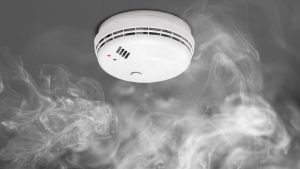Welcome to our blog! As a trusted home inspection company serving West Palm Beach, Port St. Lucie, and Ft. Lauderdale, we understand the critical role that safety plays in every home. In this blog post, we’ll explore the lifesaving importance of smoke detectors and carbon monoxide detectors, and why every homeowner should prioritize their installation and maintenance.

-
Understanding Smoke Detectors:
- Explain how smoke detectors work and their primary function of detecting smoke and fire.
- Highlight the alarming statistic that fires can double in size every 30 seconds, underlining the need for early detection.
- Emphasize that smoke detectors provide vital early warning to occupants, allowing them to evacuate promptly and call emergency services.
-
The Types of Smoke Detectors:
- Discuss the two main types of smoke detectors: ionization and photoelectric.
- Explain the differences between the two technologies and their varying strengths in detecting different types of fires.
- Recommend the use of dual-sensor smoke detectors for optimal protection, as they combine the benefits of both technologies.
-
Placement and Installation:
- Provide guidelines on the proper placement of smoke detectors throughout the home.
- Highlight key areas such as bedrooms, hallways, living rooms, and near kitchen areas where fires often start.
- Offer tips on installation, including mounting height, avoiding obstructions, and regularly testing the detectors.
-
Carbon Monoxide Detectors:
- Educate readers about the dangers of carbon monoxide (CO) and the importance of having detectors in the home.
- Explain that CO is a colorless, odorless gas produced by appliances, fireplaces, and vehicles that can be fatal when inhaled in high concentrations.
- Highlight the symptoms of CO poisoning, such as headaches, dizziness, nausea, and confusion.
-
Types of Carbon Monoxide Detectors:
- Discuss the different types of carbon monoxide detectors available: biomimetic, metal oxide semiconductor (MOS), and electrochemical sensors.
- Explain how each type works and their varying sensitivity levels.
- Recommend using detectors with digital displays that provide real-time CO levels for added safety.
-
Placement and Installation:
- Provide guidelines on the proper placement of carbon monoxide detectors in the home.
- Emphasize the importance of installing detectors near sleeping areas and on each level of the home.
- Advise against placing CO detectors near fuel-burning appliances to avoid false alarms.
-
Maintenance and Testing:
- Educate homeowners on the importance of regular maintenance and testing for smoke and CO detectors.
- Provide a checklist for testing detectors, changing batteries, and replacing expired units.
- Encourage readers to familiarize themselves with the manufacturer’s instructions for specific maintenance requirements.
-
Additional Safety Measures:
- Offer supplementary safety tips, such as having a fire escape plan, practicing fire drills, and keeping fire extinguishers accessible.
- Recommend regular inspection and maintenance of fuel-burning appliances by qualified professionals.
- Stress the significance of homeowners investing in their safety by staying informed and proactive.
In conclusion, the installation of smoke detectors and carbon monoxide detectors is crucial for safeguarding your home and loved ones. By following the guidelines outlined in this blog post, you can create a safer living environment and have peace of mind knowing that early detection is your first line of defense against fire and carbon monoxide hazards.
Remember to consult Mindful Home Inspections to ensure your detectors are properly installed and functioning correctly. Stay safe and protect what matters most!


